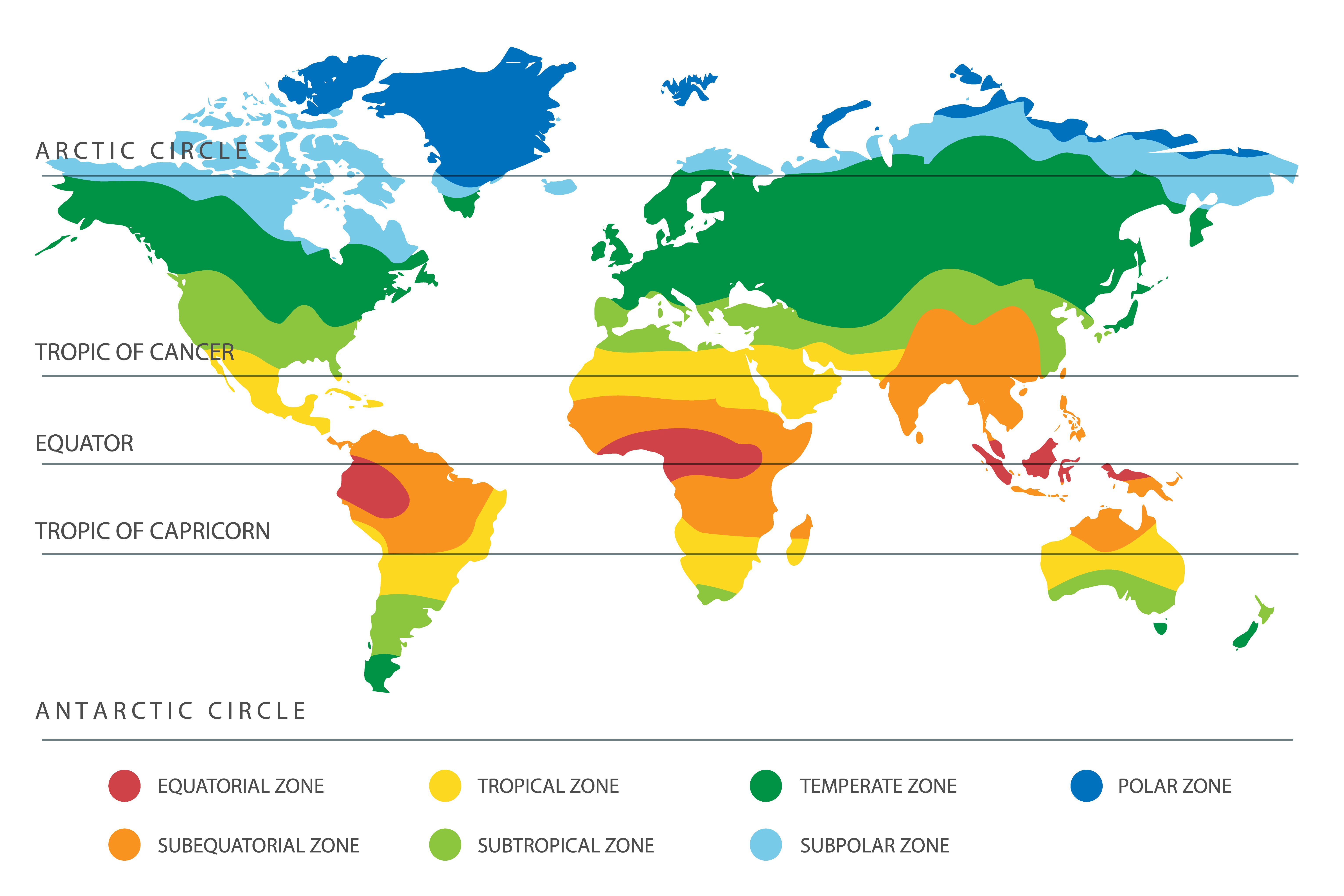The Tropic of Cancer and the Tropic of Capricorn are the two lines you’ll see above and below the equator, respectively, on the globe of Earth. But what do these two lines actually mean and what’s their impact on life on Earth?
What is the Tropic of Cancer?
The Tropic of Cancer is the most northerly circle of latitude on Earth at which the Sun can be directly overhead, while the Tropic of Capricorn is the most southerly circle of latitude on Earth at which the Sun can be directly overhead.
The area in between these two lines is known as the Tropics, a belt across the belly of the world that receives more direct sunlight than the rest of Earth, creating weather that’s generally hotter and wetter. Y’know, like tropical weather?
The Tropic of Cancer is located in the Northern Hemisphere at approximately 23.5 degrees north latitude, running across Mexico, North Africa, Saudi Arabia, the UAE, Oman, India, Myanmar, and southern China.
Beneath the equator in the Southern Hemisphere, the Tropic of Capricorn cuts through the center of South America, southern Africa, and Australia at 23.5 degrees south of the equator.

Where the tropics sit on a map of the Earth.
Image credit: bogadeva1983/Shutterstock.com
On the summer solstice of the Northern Hemisphere, around June 21 each year, the Sun attains its greatest declination north and is placed directly over the Tropic of Cancer. This line of the map was named Tropic of Cancer thousands of years ago – when the line was named, the Sun lay in the constellation Cancer (meaning “crab” in Latin) on June 21, even though this is no longer the case today due to the precession of the equinoxes.
What is the Tropic of Capricorn?
Likewise, the Sun is directly over the Tropic of Capricorn each southern summer solstice, around December 22 each year. It picked up this name because this date occurred when the Sun was in the zodiac constellation Capricorn (symbolized by the sea goat) thousands of years ago. Once again, however, this is no longer the case in the 21st century.
It’s estimated that around 40 percent of the world’s population lives in the Tropics, while more than 50 percent live north of the Tropic of Cancer. The remaining minority live south of the Tropic of Capricorn.
Most of the world’s poorest people live in the Tropics. While the situation has improved over the past three decades alone, the Tropics are still significantly behind the rest of the world when it comes to reducing the number of people experiencing extreme poverty.
This is inseparable from the fact that the vast majority of countries in the Tropics have been subject to colonization in recent centuries. While they gained independence in the second half of the 20th century, the impacts continue to be felt.
Economic development has also stuttered due to the burden of disease, which is considerably higher in the tropics than in temperate climates. Likewise, agricultural productivity is considerably lower in the tropical zone compared to elsewhere, primarily due to soil erosion, pests and parasites, water availability, and the effects of tropical climates on plant respiration.
They might look like mere lines on a map, but the Tropic of Cancer and the Tropic of Capricorn have a huge influence on the way billions of people live their lives.
Source Link: What Are The Tropic Of Cancer And The Tropic of Capricorn?